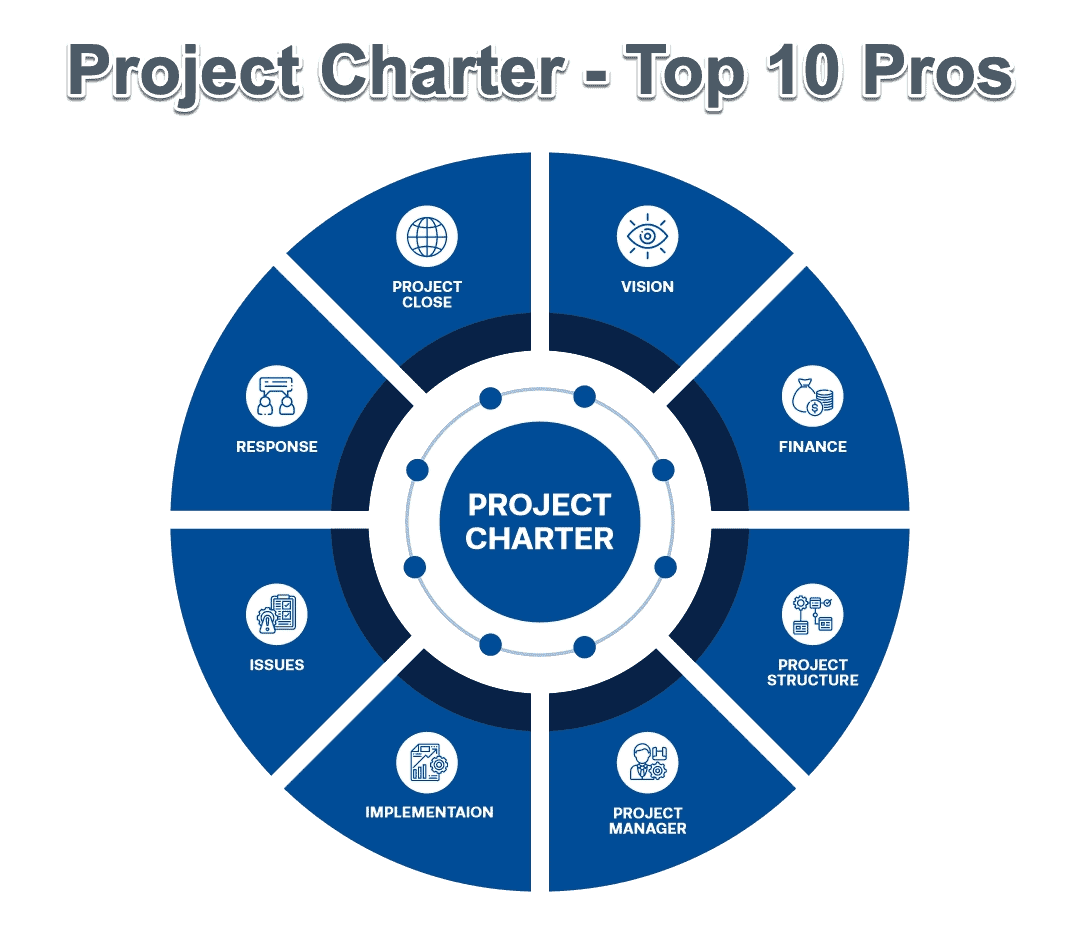
In the world of project management, the success of a project often hinges on the clarity and structure provided at its inception. A project charter serves as the cornerstone for this structure, setting a firm foundation for project objectives, roles, and expectations. By its very nature, a project charter is not just a document; it’s a roadmap for project execution and a contract of sorts between the project team and stakeholders.
Understanding the significance of a project charter requires an appreciation of its multifaceted role in aligning project goals with business objectives. It’s a tool for communication, a resource for conflict resolution, and a reference for decision-making. In environments where multiple projects compete for resources, the clarity provided by a well-crafted charter can be the deciding factor in a project’s success or failure.
Top 10 Pros or Advantages of Using Project Charter
Embarking on the journey of understanding the top 10 advantages of using a project charter is akin to unlocking a treasure trove of project management wisdom. This exploration is not just about listing benefits; it’s about delving into how a well-structured charter can transform the trajectory of a project.
- Defines Project Scope and Objectives: A project charter clearly delineates the boundaries and objectives of the project, preventing scope creep and ensuring that all stakeholders have a unified understanding of what the project aims to achieve.
- Establishes Authority and Responsibility: It formally empowers the project manager with the authority to allocate resources and make key decisions while also clarifying the roles and responsibilities of team members and stakeholders.
- Enhances Stakeholder Alignment: By outlining the project’s objectives and approach, the charter helps align stakeholder expectations and promotes a shared understanding of project goals and outcomes.
- Facilitates Resource Allocation: With a clear outline of project requirements, the charter aids in the effective allocation and management of resources, ensuring that they are used efficiently and appropriately.
- Guides Decision Making: The project charter acts as a reference point for decision-making throughout the project lifecycle, providing a framework against which to measure choices and changes.
- Improves Risk Management: Identifying potential risks and mitigation strategies in the charter helps in anticipating and managing risks more effectively, reducing the likelihood of project derailment.
- Enhances Communication: A well-defined charter serves as a communication tool, providing team members and stakeholders with essential information and a common language for discussing the project.
- Sets Clear Expectations: It establishes clear expectations for project outcomes, timelines, and milestones, reducing ambiguity and the potential for misunderstandings.
- Supports Project Evaluation: The charter provides criteria for measuring project success, facilitating ongoing evaluation and ensuring alignment with organizational goals.
- Encourages Organizational Learning: By documenting project objectives, strategies, and outcomes, the charter contributes to the knowledge base of the organization, supporting continuous improvement and learning.
What is a Project Charter?
A project charter is a formal document that outlines a project’s objectives, scope, stakeholders, and overall plan. It serves as an authorization for the project, granting the project manager the authority to utilize organizational resources to achieve project goals. The charter is typically developed early in the project lifecycle, often during the initiation phase, and is approved by key stakeholders or sponsors.
This document includes essential information such as the project’s purpose, objectives, scope, deliverables, high-level requirements, risks, milestones, budget, and timelines. It also defines the roles and responsibilities of the project team, thereby setting the stage for effective collaboration and communication. The charter’s purpose is not to detail every aspect of the project but to provide enough context and clarity to guide the project team and stakeholders throughout the project’s duration.
Conclusion
The project charter is not merely a document; it’s a strategic blueprint for success. It underpins every aspect of project management, from inception to conclusion, ensuring that every team member and stakeholder is aligned with the project’s objectives and approach. By defining the scope and objectives, establishing clear roles and responsibilities, and serving as a guide for decision-making and communication, the project charter is an essential tool in the project manager’s toolkit.
Furthermore, its role in enhancing risk management, resource allocation, and organizational learning cannot be understated. In essence, the project charter is the cornerstone of successful project management, turning chaos into clarity and aspirations into achievements.
Daniel Raymond, a project manager with over 20 years of experience, is the former CEO of a successful software company called Websystems. With a strong background in managing complex projects, he applied his expertise to develop AceProject.com and Bridge24.com, innovative project management tools designed to streamline processes and improve productivity. Throughout his career, Daniel has consistently demonstrated a commitment to excellence and a passion for empowering teams to achieve their goals.